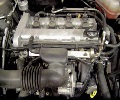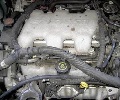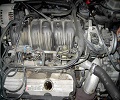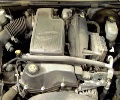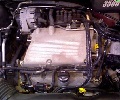What Is The Secondary Air Injection and Valve
The Secondary Air Injection (AIR) System reduces exhaust emissions following initial engine start up. This occurs when the engine Start-up coolant temperature is between 3-50 C (37-122 F) and the intake air temperature (IAT) is more than 1C (32F). The AIR pump will operate until Closed Loop operation is achieved.
The powertrain control module (PCM) activates the AIR system by suppling a ground to the AIR pump relay and AIR solenoid relay simultaneously. This action closes the internal contacts of the AIR pump relay, energizing the AIR pump and also closes the internal contacts of the AIR solenoid relay, energizing the AIR solenoid, opening the shut-off valve. The AIR pump forces pressurized fresh air into the pipes/hoses and past the check valve into the exhaust manifold, accelerating catalyst operation. When the AIR system is inactive, the AIR shut-off valve prevents airflow in either direction.
The AIR diverter valve has an electronic solenoid mounted on the valve. The resistance of the solenoid is 4-7 ohms and the current draw is 2-3.5 amps. The solenoid opens the shut-off valve when battery voltage is applied to the valve. Once opened, pressurized air from the AIR pump flows past the check valve and is directed into the exhaust manifold through an outlet pipe. The shut-off valve prevents fresh air from being drawn into the exhaust manifold by providing a positive seal when the AIR system is inactive. The solenoid, valve, and outlet pipe are serviced as an assembly.
